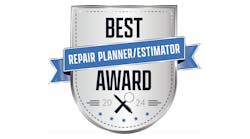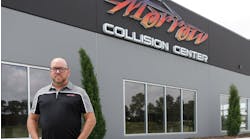Every week, I get somewhere around 10–20 emails from folks across the industry, asking some variation of this question: Mike, how can I know if an OEM has released a position statement on diagnostic scanning, and, if they have, where can I find it?
I kid you not—this question comes to me constantly. This morning, while writing this, I’ve already gotten it twice. (Wait, there’s another; make that three times!)
Two thoughts on this: One, it’s great there are this many people engaged in the topic and interested in learning more; two, it’s disheartening that there are still so few shops that have made the adjustment to begin making pre- and post-repair scans a part of their daily operations.
In my most recent Who Pays for What? Survey, we asked folks about vehicles scanning, and the responses were concerning. Only 50 percent of shops said they perform scans after the vehicle is repaired, and 44 percent said that when there are no dash lights on, they don’t see the need to scan.
This is frightening information, my friends. I’ve gone over the issue rather extensively in this space in the past, and FenderBender has done a great job covering it over the last year. The bottom line is that automakers say we need to do this, and we’ve seen firsthand the dangerous ramifications for not doing it. But repairers across the country still struggle to find the information (provided by the OEM) on what is needed and when; they can’t find the official documentation that would either help them to determine a proper procedure for their own businesses or help them in negotiations for reimbursement on the scans they performed.
That’s why these emails come to me—and keep coming to me. And it’s not just about diagnostic scanning. Folks across the industry need information, and they need to know where and how they can find it.
Now, here’s the good part: That information is out, and it’s actually available through a few very effective platforms. So, what I’d like to do this month is give you a brief overview on two of them—two websites that can be critical to repairing vehicles the right way.
The first is OEM1Stop (oemonestop.com). When you go to this website, it acts as a portal for access to all the OEM repair procedures. Now, some of these OEMs require you to pay to access their websites (Audi, Toyota, Mercedes and Hyundai are a few examples), but the domestic manufacturers—GM, Ford and Chrysler—make their information available for free.
It’s all right there, and one of the biggest resources that I love on this website is a blue button in the upper-right portion of the screen; it says “Position Statements.” This gives you every OEM’s full range of positions statements—all free to download. And, yes, diagnostic scanning is a part of that. Under the “Repair Procedures” heading, there’s an entire section dedicated to vehicle scanning with a button for each OEM. They couldn’t have made it simpler or more effective, and for your estimator who’s negotiating with an insurance representative over a charge for a pre- or post-repair diagnostic scan, that estimator can pull of documented proof of why it is required. And he can do that in a matter of seconds. Seconds.
“Why aren’t we better utilizing the tools they have available to us in regards to finding repair information?”
- Mike Anderson, Owner, Collision Advice
Another great aspect of having this information at your disposal (beyond knowledge for your team, and working with insurance partners) is in discussion and marketing with consumers. There is an entire segment of this website (accessed just below the blue “Positions Statements” button) for consumer collision information. It takes you to an offshoot site that has tons and tons of great information to share with your customers, from the different in OE parts to choosing the right body shop. There’s OEM documentation there, too. What better way to start a discussion with a consumer than sharing this through social media, or attaching the links in check-in and follow-up emails? Educating consumers on the technology in their vehicles and the requirements in restoring them to a safe level gives you informed customers who can be smart, correct decisions regarding their vehicles.
Now, extending from OEM1Stop, there’s another site that everyone has heard of, but doesn’t use anywhere near enough. And that’s i-car.com. I know everyone reading knows of this website, and knows a lot about I-CAR. But, with that being the case, why aren’t we better utilizing the tools they have available to us in regards to finding repair information? Just in regard to the scanning issue, I-CAR has a fairly new feature on its site now that is dedicated to the topic, describing all the different types of scans required on vehicles and the systems that need scans and calibrations. It’s an incredible resource.
Then there’s I-CAR’s “Ask I-CAR” feature (in its “Technical Knowledge” section). If there’s a repair procedure your team cannot find, send in an inquiry. I’ve found that response time is typically less than two hours.
So, these are a just a couple great resources to use. Neither are new (I-CAR has completely reinvented and improved its site in recent years, though), but they are certainly underused. There are many others, too, but these can directly answer that specific scanning question many of you have. Not that I don’t enjoy receiving your emails; keep them coming! The only way we can improve the industry is by seeking information. Never stop.




